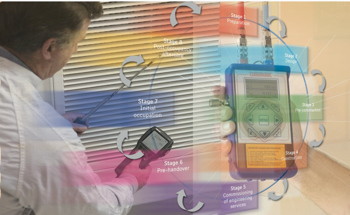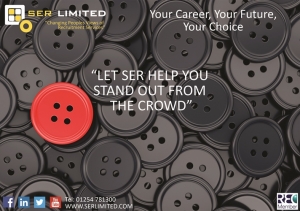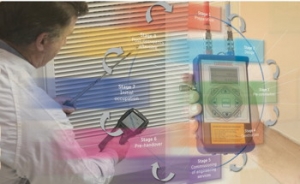Test Owner
2017 AV industry Outlook and Trends Analysis – inAVate Magazine – June 2017
In 2016, the European pro AV market was worth $42 billion, according to a new InfoComm International study.
This is a drop of 4% from 2015, says HIS Markit, the analyst firm InfoComm hired to conduct the research.
The study predicts a compound annual growth rate (CAGR) of 4% through 2022, which is approximately an additional $10 billion in revenue.
Contraction finally gives way to growth
What's changed since the 2014? A lot, starting with the recession's effect on spending.
"In 2016, industry value contracted in Central Europe, Eastern Europe and Western Europe," the report says. "Relative to the industry's 2014 value, Central, Eastern and Western European revenues shrunk by 7%, 7% and 4% CAGR, respectively.
"Scandinavia is the only European sub-region to have grown from 2015 to 2016. Scandinavia's monetary independence, coupled with its intrinsic propensity to adopt new technologies, largely explains the sub-region's ability to buck neighbouring, contractionary trends."
The report predicts that through 2022, the rest of the European sub-regions all will resume growing. Although Western Europe will continue to drive about 70% of the region's proAV market, its CAGR through 2022 will be 3%. By comparison, Central and Eastern European AV revenues will have respective CAGRs of 7% and 9% through 2022.
A variety of factors are driving those numbers. Besides general economic trends, there are also industry-specific ones. For example, declining flat panel prices are helping grow the digital signage market.
"So we have a relatively bright outlook," Tom Morrod, the HIS vice president overseeing the reports, told InAVate.
Flat panel segment grows at projections expense
"The single largest technology evolution is coming from the replacement of projectors by professional-grade flat-panel displays," the report says. "Between 2014 and 2017, while the video displays market grew by 26%, the video projector market lost 40% of its value. The loss of $3 billion in projector sales was only offset by a gain of nearly $800 million in display sales."
The sector is still bottoming out, but there's light at the end of the tunnel because display sales continue to boom.
"We're going to start seeing a lot more displays in a lot more places because the price point can drop so much lower than the projection price point," Morrod says. "Projection will become very niche."
Services opportunity remains strong.
Services are another opportunity, with the report predicting compound annual growth of more than 4%.
"Through 2022, we anticipate that lighting systems will grow by 24% on average, year on year, driven largely by installations in retail, consumer high-end systems based around smart home and more complex systems in education and care environments," the report says.
Continued demand for energy efficiency and the rise of smart buildings will spur a lot of that growth.
"There's very, very significant investment that will run at least through our forecast period," Morrod says.
The rest of the report can be seen in the June copy of the InAVate magazine – the rest of the report outlines other areas of industry growth and where the growth is coming from.
A to Z of Recruitment - P is for People
P is for People
SER operate in a line of business where people really are key, whether that be our clients, our candidates or our consultants.
We are going to break this down into those 3 people in our process and explain why we are different.
Candidates
As a candidate you have a choice so why choose us?
We all know that finding the right job can be at best – time consuming but at worst stressful and incredibly demotivating. Trawling through a list of jobs and getting no replies can often seem like a complete waste of time.
How about we flip it on its head, change the system and update the process so you no longer have to spend hours of your time seeing no results.
It becomes our job to do that for you through our consultants – they will take the time to understand you, what makes you different and what you want to do and then find you something that is just right, and we do this at no cost to you.
Clients
We build up a lasting professional relationship with our clients, we understand the type of people they want to work at their companies and we help them find it.
Recruitment truly is a partnership and it is our consultants who link that partnership together.
SER & Clients partnership + SER & Candidates partnership = Client & Candidates Partnerships
If you would like SER to help you find the right job or people for the job submit your CV or register a vacancy.
Your Career, Your Future,
Your Choice.
A to Z of Recruitment - O is for Opportunity
Opportunities can come along at any time, and this is the chance to progress from where you are now to where you want to be and maybe you don't even know where that is now.
You could be happy in your job and not looking at progressing anywhere, but there is a chance you have become comfortable in your current situation – and we know it is easy to do.
Although opportunities can appear at any time, it doesn't mean they appear everyday so you need to take the opportunities or at the very least, consider the opportunities when they arrive.
Remember that every conversation is worth having – you don't know who you are speaking to, and what they know about opportunities that could be right for you.
"It's being in the right place at the right time and taking advantage of your opportunities." Lee Majors
Submit your CV today, and let SER present you with the opportunities that could be right for you.
Help us to help someone you know, if you know someone who may be interested in one of our roles, refer them to us – we have a referral scheme in place – read about it here: http://www.serlimited.com/referrals-rewards/candidates/referral-awards
MBS editor, Ken Sharpe, discusses ‘That performance gap – again’
At the beginning of June's issue of MBS magazine, the editor Ken Sharpe discusses the performance gap.
He says, "the competence of building-services engineers in delivering buildings with an actual energy consumption that bears any relationship at all to the predicted energy consumption was recently thrown into focus by a widely reported study from the University of Bath about the 'performance gap.'
It is widely known that the actual energy use of a building can be 200 to 450% greater than predicted by building modelling.
The study by the University of bath suggests that many non-domestic buildings in the UK often use 'twice as much energy and emit twice as much carbon dioxide as the professionals who designed them predicted.' The study also observes, 'this massive under-estimation of how much energy a building will use is a problem because the UK's buildings account for nearly 50% of the nations greenhouse-gas emissions.'
The basis of a research project by the Building research establishment is that the reasons for the performance gap are generally unknown.
The overall performance gap has two components – the compliance gap and the actual performance gap. The compliance gap is estimated to be 50 to 70% of the overall gap and can be solved by more realistic modelling to more closely reflect the conditions in operation.
The larger actual performance gap is more of a mystery, with much speculation and hypothesis, but little speculation and hard evidence – which is why BRE has proposed a research project.
Read the latest magazine here: http://edition.pagesuite-professional.co.uk//launch.aspx?eid=01365b0a-a1e3-4a10-b1e1-820709396eb8
Engineering-services market survey shows continued optimism for the sector
In a recent sector wide survey, 'Building engineering business survey' sponsored by Scolmore, it's reported that almost 80% of engineering services firms have reported an increase or steady turnover during the first quarter of this year.
The survey has been run in partnership with BESA (Building Engineering Service Association), the ECA (Electrical Contractors' Association) and SELECT (Scottish electrical trade body).
The survey received 370 responses from companies all across the services sector and was completed in early to mid April.
BESA chief executive Paul McLaughlin said, 'We should be extremely heartened by these results. We continue to live through a period of unprecedented political upheaval, yet the building-engineering-services sector remains on track. For nine out of 10 respondents to be so upbeat about their immediate business prospects in the current uncertain economic climate is testimony to this industry's resilience.'
ECA CEO Steve Bratt commented, 'These figures show that the engineering-services sector continues to power ahead, against a backdrop of enormous political volatility. New business opportunities continue to be created across our sector, notably, but certainly not exclusively, linked to energy supply and storage. We remain cautiously optimistic entering into a period of further change with the upcoming general election.'
SELECT managing director Newell McGuiness added, 'It's encouraging to see continued optimism on workload, given the backdrop of uncertainty which exists at present. The rise in material costs is a concern and we hope that any further increases will be kept to a minimum.'
How to Achieve Energy Efficient Office Lighting & Improve Employee Health
By Kevin Cox, Managing Director, Energys Group
Installing LED's into a company is well known to improve the energy efficiency of the organisation, but did you know it can also make staff feel more comfortable.
LED Lights often have controls which make it possible to adjust the lights to suit the seasons. This can improve an employees concentration, can contribute to a happier environment and it can result in more productive staff.
The Carbon Trust advises lighting typically consumes 20% of the electricity used in commercial and industrial buildings, offices included.
'In these times of high energy prices, finding cost-effective ways to reduce levels of electricity consumed by lighting can deliver appreciable long-term reductions on business electricity bills,' it argues.
LED lighting is quick, easy to install, pays back fast, and creates minimal installation disruption. But when considering LED upgrades, it's vitally important to also think about it will affect staff wellbeing. Here are some of the top elements to consider.
Health issues associated with glare
'Bright lights and glare, especially if flickering, can induce migraines,' writes the NHS. 'This is because bright and flickering lights boost the levels of certain chemicals in the brain, which then activate the migraine centre.'
Modern LEDs eliminate the problem of flicker traditionally found in fluorescents, but some LED products are prone to glare. This can be a big problem in offices, especially as most activity is confined to looking at PC screens.
LED product quality can vary widely, so it's important to specify LEDs with a 'low glare index'; this means that light is spread evenly over a large surface area.
Giving staff control over their lighting will also help: by allowing them to turn the lighting up, down or off in their workspace and providing desk lamps to use as a substitute for overhead lighting.
The UK Green Building Council (UKGBC) cites a recent study by neuroscientists, which suggests office workers with windows received 173% more white light exposure during work hours, and slept an average of 46 minutes more per night.
'Light is also vital for maintaining our circadian rhythm. Overall, the evidence is unequivocal; office occupants prefer access to windows and daylight, which bring consistent benefits in terms of satisfaction and health,' says UKGBC.
While the facts point towards the benefits of natural light, artificial light has a crucial role to play in keeping up light levels on cloudy days and when daylight hours are short.
Daylight harvesting products (such as our Ultra Slim Panel Light with iDim Active+) provide an efficient solution: they automatically respond to the level of natural light in the room and turn the artificial lighting up, down or off accordingly.
The end game; more productive, healthier light
When firms think about how to save energy in offices, all too often the human benefits become swamped by concerns on payback or ROI. But a happier employee represents not only a vital part of today's humanistic business, but a more profitable worker too.
For these reasons, developing LED solutions as part of strategic options to bring comfort and humanity into every office must be the watchword for 2017.
BESA calls for special sector deal
The Building Engineering Services Association (BESA) has called for the new Government to do a 'sector deal' with the built-environment industry that reflects the important role buildings play in human health, wellbeing and productivity.
The call was made when the election campaign was in full swing. Theresa May invited industries to put their case forward for special treatment, before she called the election.
'A productive and sustainable built environment delivers significant social, economic and environmental benefits,' said BESA's legal and commercial director Rob Driscoll.
'It is important to note that the building engineering sector does not just address the cost of construction, which accounts for just 10% of the total value of a built asset, but plays a major part in managing operating performance, which is responsible for 80% of total lifetime costs,' he added.
He remarked that Government officials had indicated they were prepared to lighten regulatory burdens and create special arrangements for sectors able to present a clear argument for how this would help them improve performance and drive productivity.
The automotive and aerospace industries have secured special treatment in the past, and the crucial role of building engineering services in supporting business growth through improving the built environment, protecting the health and well-being of occupants while also influencing their productivity, and supporting the development of 'smart' cities deserves similar recognition, according to the association.
BESA also called for the new administration to quickly produce a 'transparent plan' for public sector demand and infrastructure investment and to take action on the payment abuse that disrupts supply chains.
BESA has also made a direct request for a digital payment platform to be set up for public-sector projects in order to speed up supply chain payment and provide vital financial stability for contractors. It has also been advising Government departments to focus on making energy, heat and carbon efficiency a sustainable delivery priority within the next parliament.
'Achievable energy efficiency goals, backed by Government, will have to be met if the UK is to reduce carbon emissions in the lowest cost way,' said Mr Driscoll.
http://www.modbs.co.uk/news/fullstory.php/aid/17008/BESA_calls_for__special_sector_deal.html
News Update: New energy regulations means contractors should act soon
With less than 1 year to go before the governments new energy bill comes into effect, it is advised that action is taken now to prevent revenue being lost when the new energy bill comes in.
In April 2018, the new energy efficiency regulations will mean that landlords of non-domestic rented properties, which includes public sector landlords, will not be able to grant a tenancy to new or existing tenants if their property has an EPC rating below E.
From 1st April 2023, landlords must not continue letting a non-domestic property if the property has and EPC rating of F or G.
Planning for successful commissioning
The key to the successful commissioning of a project is a commissioning plan. Tony Anderson, a member of the Commissioning Specialists' Association's training committee and assessment panel shares his experience of how this simple tool provides clarity to commissioning projects.
Those who have never used a commissioning plan (shame on you!) and those that are unfamiliar with a project-specific commissioning plan can initially find it difficult to gauge how beneficial having a commissioning plan in place would be to the testing and commissioning of any project.
On the other hand, if you have had experience working on projects with a detailed commissioning plan in place you will undoubtedly know and understand the importance of having one.
So what is a commissioning plan?
According to BSRIA's BG8/2009 'Model commissioning plan' in its simplest form a commissioning plan should address the following points.
• Provide general information about the project.
• Identify the commissioning team members during each stage of the commissioning process.
• Define the roles and responsibilities for each member of the commissioning team.
• Create a schedule of commissioning activities for each stage of the commissioning process.
• Establish documentation requirements associated with the commissioning process.
• Establish communication and reporting procedures for the commissioning process.
Reflecting on projects I have worked on across the UK and overseas, the most successful have benefited from having an accurate and updated commissioning plan.
The commissioning phase of any project is normally the most difficult by its very nature. Systems only near completion towards the end of construction phase, and the commissioning phase of a project is generally shoe-horned into a few weeks/months preceding project practical completion or handover.

Guidance on preparing a commissioning plan — BSRIA guide BG8/2009.
Testing and commissioning at the latter part of a project is a necessity to allow systems to be tested with advanced/final building envelope completed. This is also when construction teams are eager to get everyone out of zones/floors to close out areas and zones, and this is when I have found that the commissioning plan can make a massive difference. The installation-team managers at this stage know what the main systems are (as opposed to floor area only) and what is required from them to allow completion of each building service.
Construction teams will know what commissioning activities are taking place. A small example is they understand why 'commissioning tiles' are not installed for duration of commissioning. A reminder of the cost of replacing ceiling tiles or downtime of removing commissioning access tiles usually helps.
The commissioning teams know what systems are to be commissioned, method statements are approved, they know who to report progress to and how to finalise system paperwork to allow systems to be fully witnessed.
Managers are aware of the process of what systems are being commissioned, where commissioning documentation is being kept and when systems will be available for witnessing.
In my experience, the common thread on projects that didn't have a plan in place was that minor building-completion issues lead quickly into major delays to completing the commissioning process. How much of this was down to not having a commissioning plan in place is difficult to assess. However, the outcome was the same on each project that did not have one.
Time and time again commissioning activities were overlooked. A common issue which on the face of it appear could appear trivial — the fitting out entire floors of floor tiles and false ceilings to give the area 'the finished look'. Fitting the tiles out will help make the area 'look' finished, but without commissioned MEP services the area in truth is far from complete. On large-scale complex systems, commissioning teams having to re-access hundreds of tiles, sometimes two or three times, caused major disruption to the commissioning and witnessing of systems.
Construction team members didn't realise what was expected from them at each stage of the project. The common issue was they had little or no understanding of what a commissioning activity involved — both from a system boundary and duration point of view.
Issues also came from the specialist commissioning teams that were not fully aware of the entire reporting process when completing a system. An example is a dry-riser witness test not being scheduled or not all witnessing parties invited — leading to the entire system having to be retested in front of the full client witnessing team, including the Building Control Officer.
However, creating a commissioning plan will not ensure that the testing and commissioning will run hassle free — and such a belief is a popular misconception. The document itself isn't a one-stop shop that lists every possible outcome or prevents any issues arising during the testing and commissioning of projects. However, it is a platform that allows discussions to be performed at a very early stage and brings together the entire site team from construction to commissioning, through to integrated systems testing. Each person is aware and has a reference point to responsibilities that are clearly set out for construction and commissioning team members at each stage of a project.
Almost all of the major obstacles I have faced from all sides of the fence with regards to commissioning MEP services in any building relate back to not having clear, concise communication between all parties on site.
It sounds simple, and it is. Gathering everyone involved in the commissioning process and continually discussing the process, requirements and responsibilities adds clarity at the commissioning stage of the project.
http://www.modbs.co.uk/news/fullstory.php/aid/16994/Planning_for_successful_commissioning.html
A to Z of Recruitment - N is for Nerves
N is for Nerves
So you have applied for a job with SER, you have been successful in being offered an interview, and suddenly you feel all nervous and anxious.
You are going to have to face an interview, and you haven’t done that in a long time.
You know that this job is a very good fit for you, but you have to overcome your nerves in order to get the job.
Here is a link to a document that will offer you some tips about interviews and they should help put your mind at ease.
You are capable of doing this job. Believe in yourself and you never know where you can get.
Your Career, Your Future,
Your Choice.





